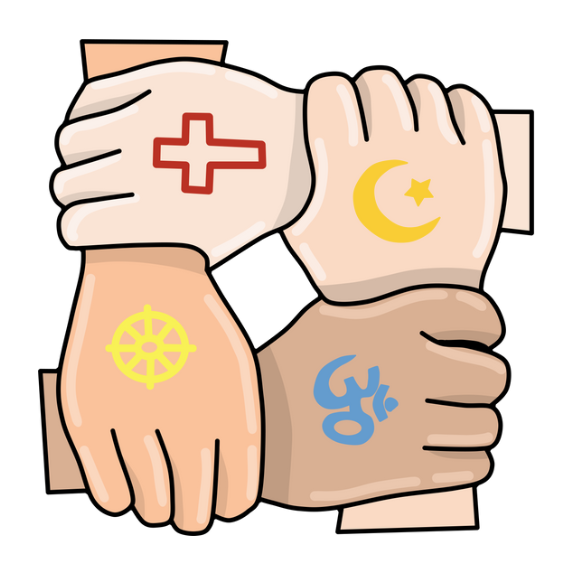Religious Education
The Religious Education (RE) curriculum at Blowers Green Primary School encourages children to explore different beliefs and values, promoting respect, empathy, and a deeper understanding of the diverse world around them.
Intent - What does the Religious Education curriculum intend to do?
At Blowers Green, our Religious Education (RE) curriculum is designed to foster an understanding of the diverse beliefs and practices that shape our world. We aim to inspire curiosity, respect, and reflection by providing children with the knowledge of key world religions, their teachings, and their cultural impact.
Our RE curriculum is rooted in a commitment to inclusivity, promoting respect for all faiths and encouraging children to reflect on their own beliefs and values. It also supports the development of key skills such as critical thinking, empathy, and open-mindedness. By learning about religion, children will be empowered to engage with the world around them in a thoughtful and compassionate way, fostering tolerance and understanding in our increasingly diverse society. Our concepts (duty, worship, prophets and prophecy, revelation and covenant) ensure a clear line of sight between religions, enabling children to hold balanced, well-informed conversations about what unites and connects these religions as well as what is different.
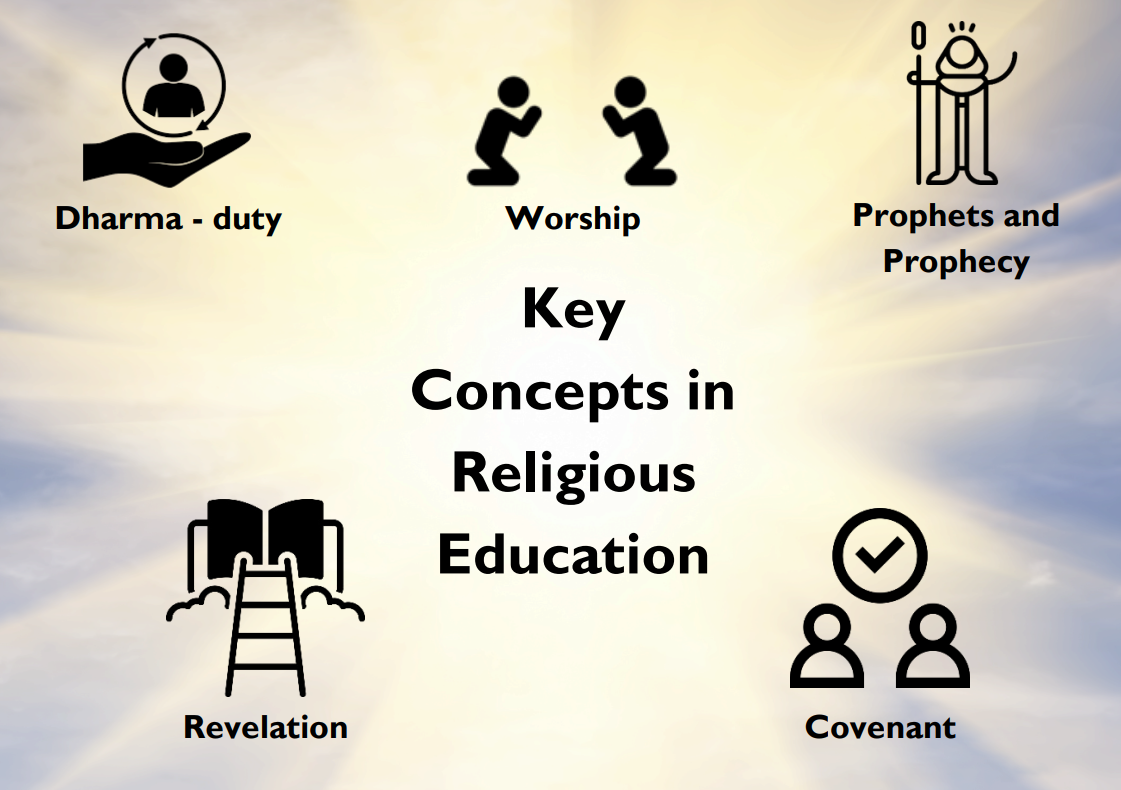
Implementation – How is the curriculum implemented?
At Blowers Green, RE is taught following the Dudley Agreed Syllabus 2023-2028, which covers Christianity, Buddhism, Hinduism, Islam, Judaism and Sikhism, meeting the requirements of the National Curriculum and deepening understanding. The carefully selected content of the Agreed Syllabus enables us to provide a consistent whole school approach to RE that builds a schema whereby knowledge is added slowly. This enables interconnection through constantly repeating and revisiting concepts: therefore, ensuing children’s learning goes deeper not wider.
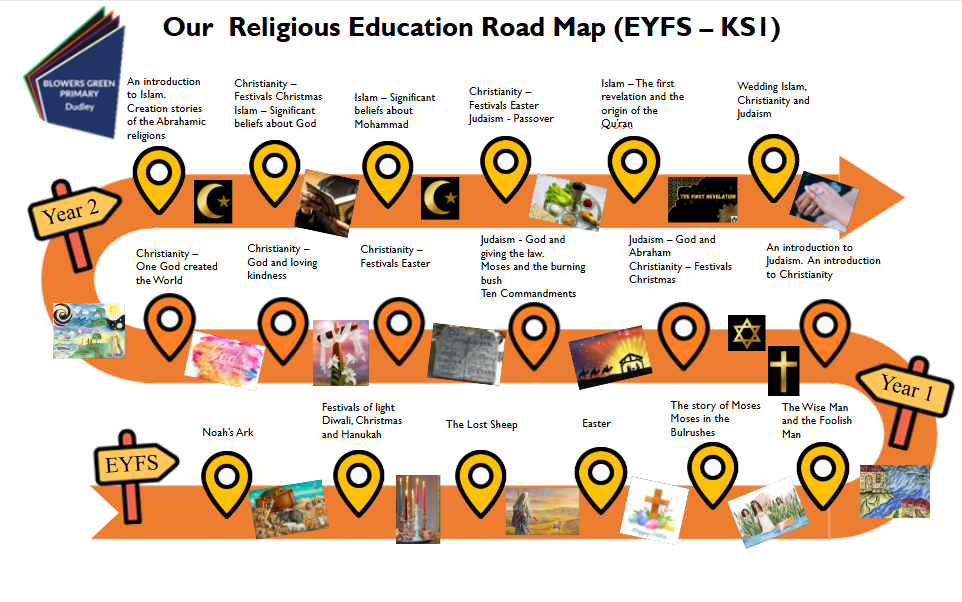
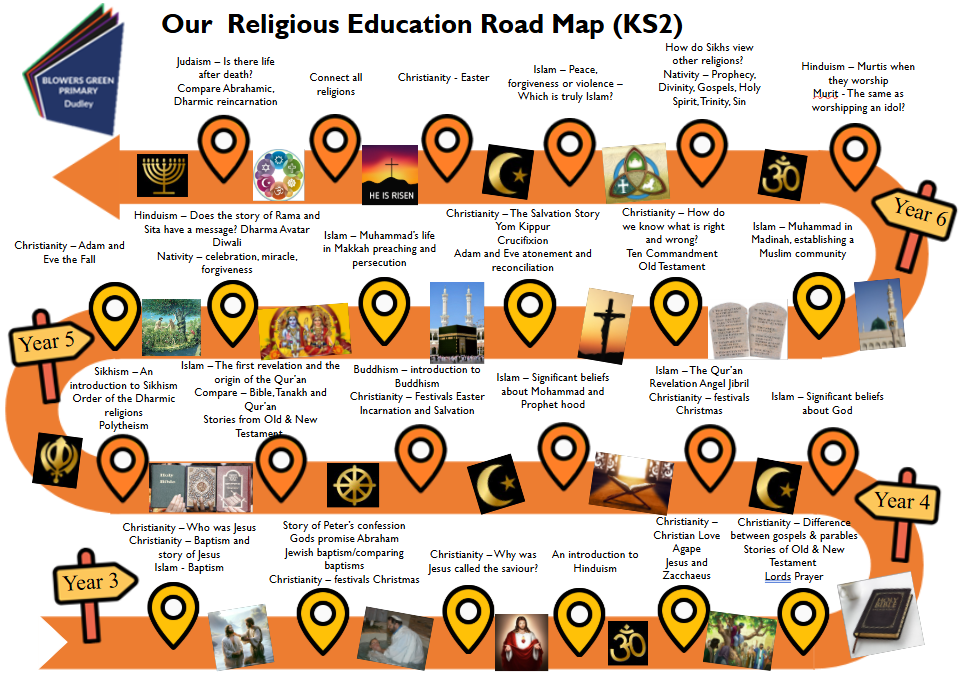
RE offers distinctive opportunities to promote pupils’ spiritual, moral, social and cultural development allowing time for reflection, discussion, dialogue and debate.
RE is taught in every year group on a weekly basis and provides children with opportunities to:
-
Learn and understand about different religions and their principal traditions by answering key questions.
-
Enhance their awareness and understanding of beliefs, practices and expression by exploring key aspects of religions.
-
Gain better understanding of the influence of religion on individuals, families, communities and cultures.
-
Explore their own faith and reflect upon their own beliefs, values and traditions.
RE units are sequenced to build upon previous understanding of concepts. At Blowers Green, children study and make thoughtful comparisons between the Abrahamic (Judaism, Christianity and Islam) and Dharmic (Hinduism, Buddhism and Sikhism) religions, fostering an understanding of both the similarities and differences between these two major religious traditions and the religions they encompass. Through this exploration, children gain insights into the core beliefs, practices and values that shape each faith, understanding the narrative of each religion, whilst developing respect for the diversity of religious expressions around the world.
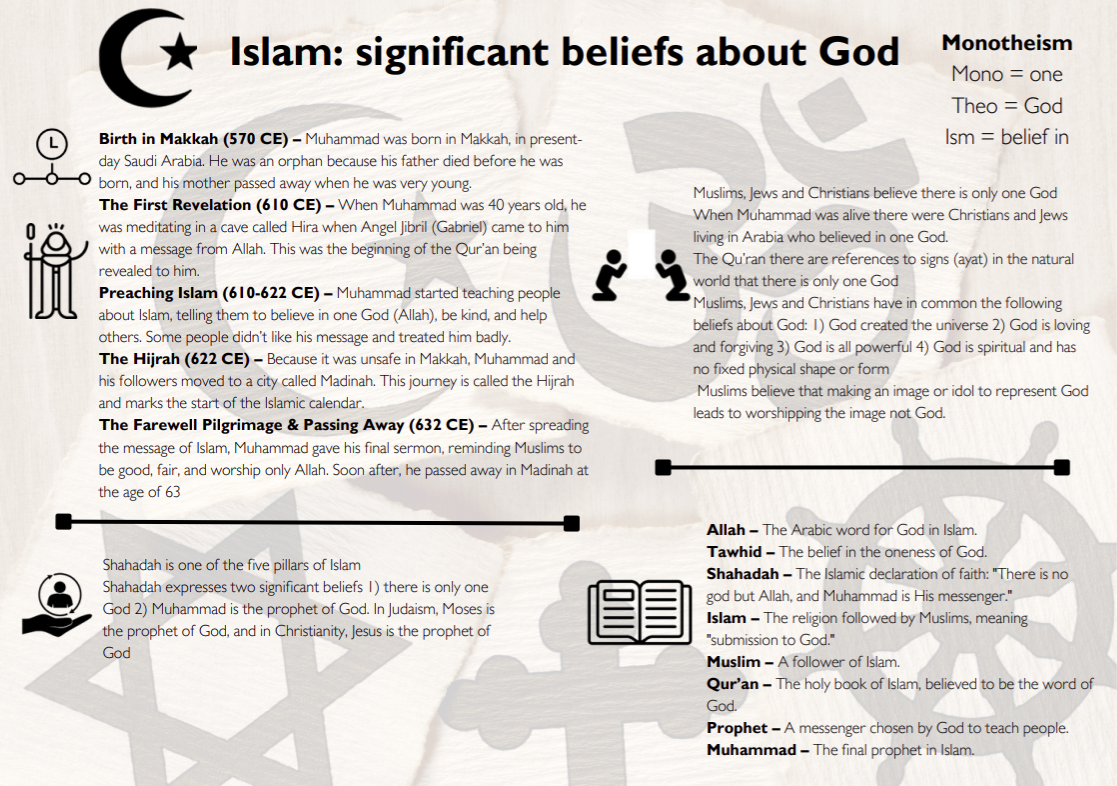
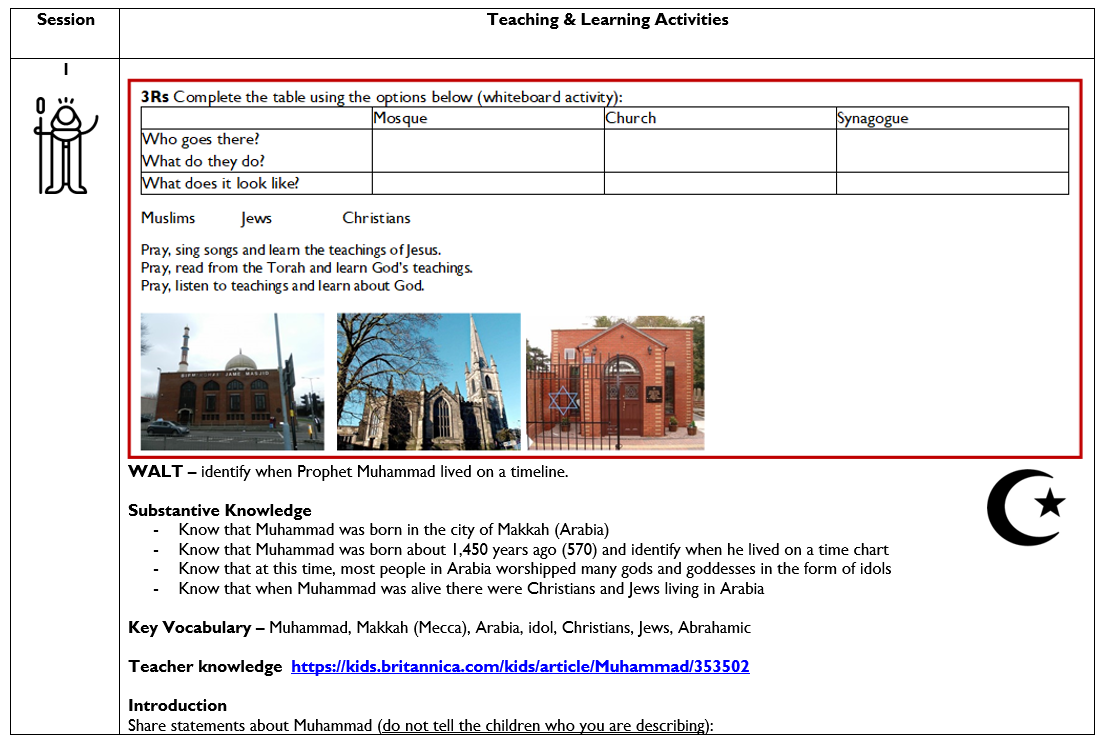

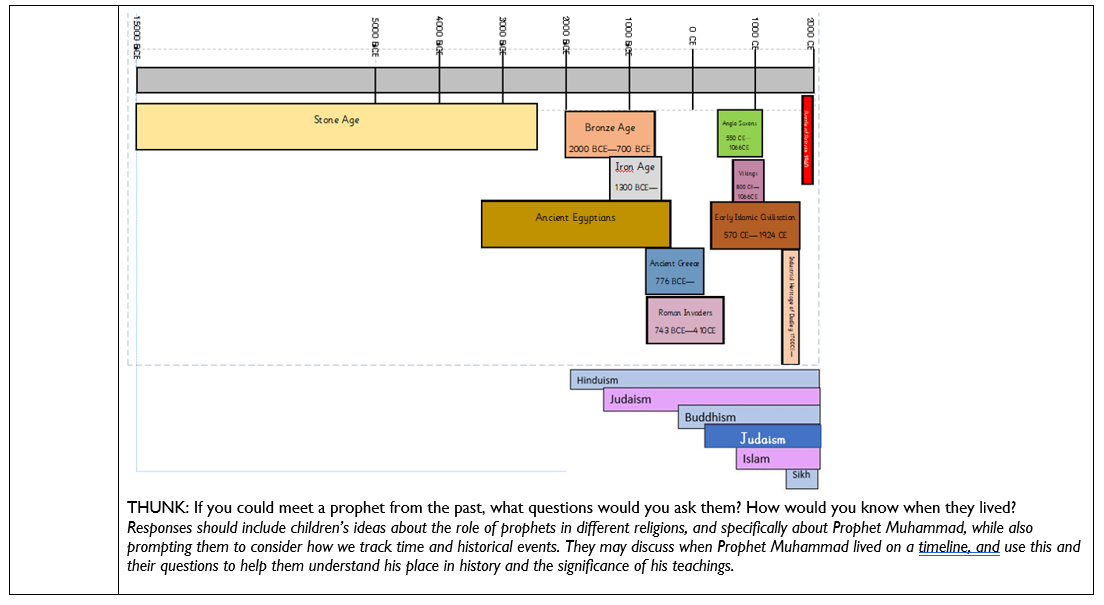
Impact – What progress will children make?
At Blowers Green, progression is facilitated by building on children’s prior learning. Retrieval practice is used as a learning tool, not just an assessment tool. Opportunities within each lesson are created for pupils to show what they know. The multiple encounters with the Abrahamic and Dharmic religions inspires and develops each child’s ‘religious literacy,’ keeping learning ‘warm’, helping them appreciate the nature and diversity of religion and belief in the world around them, as well as the relationships between them. In essence, when children leave Blowers Green, they will have developed the knowledge needed to be skillful, demonstrating a deep understanding of:
-
What unites and connects the religions studied.
-
What is different about the religions studied.
-
How each of the religions studied came to be.
Aims of the Religious Education Curriculum
The national curriculum for religious education aims to ensure our pupils in;
Key Stage One
-
Learn about the place of religion and belief in their local community.
-
Learn about key features of Christianity.
-
Learn about key features of at least one other religion or non-religious world view.
Key Stage Two
-
Learn about the nature of religion and belief.
-
Learn about Christianity.
-
Learn about at least two other religions and/or world views.
"Differences were meant not to divide but to enrich."
~ J.H Oldham
